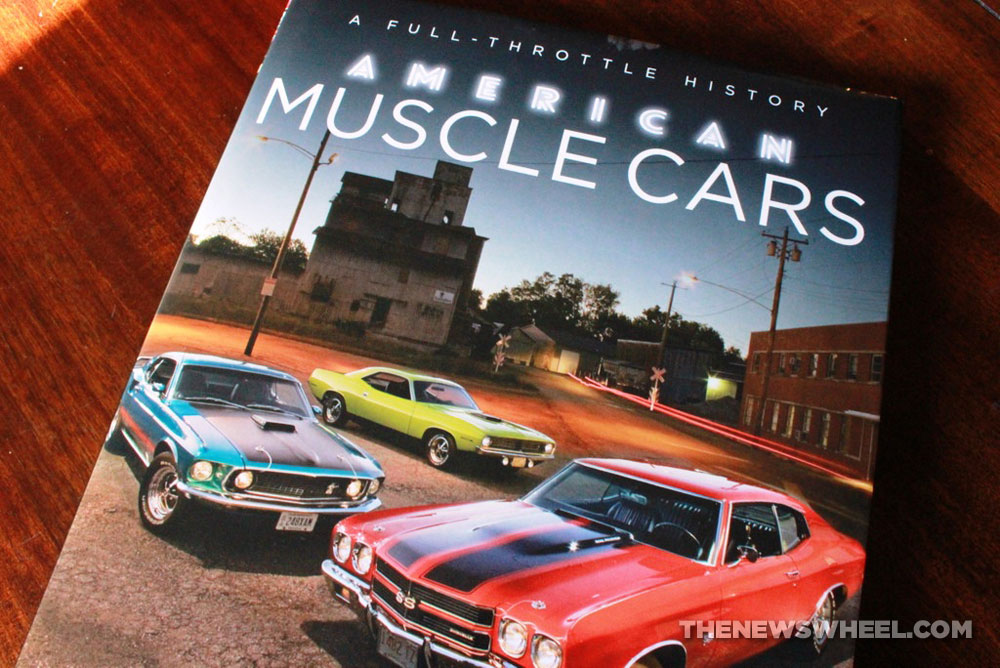Question of the Day: What is the first muscle car?
In the world of automobiles, few vehicles garner as much admiration and respect as muscle cars. With their powerful engines and iconic designs, these road beasts have left an enduring legacy among car enthusiasts of all ages. Join us as we delve into the fascinating history of muscle cars, from their inception in the 1960s to their lasting impact on today’s roads.
Question of the Day: What is the first muscle car?
Origins of Muscle Cars: Tracing the Roots of High-Performance Vehicles
Muscle cars have a storied history dating back to the 1960s when American automakers began creating high-performance vehicles designed specifically for speed and power. These iconic cars were known for their large engines, sleek designs, and impressive horsepower.
One of the earliest muscle cars was the Pontiac GTO, introduced in 1964. It quickly gained popularity among car enthusiasts due to its powerful V8 engine and unprecedented top speeds. This success paved the way for other manufacturers, such as Ford and Chevrolet, to enter the muscle car market with their own powerful models.
By the late 1960s and early 1970s, muscle cars had become deeply ingrained in American car culture, with popular models like the Ford Mustang, Chevrolet Camaro, and Dodge Challenger dominating the streets and racetracks. These vehicles were not only symbols of power and speed but also represented a sense of freedom and rebellion.
Today, muscle cars continue to be a beloved part of automotive history, with modern versions of classic models still being produced by manufacturers. Despite technological advancements and changes in consumer preferences, the spirit of the muscle car lives on in the hearts of car enthusiasts worldwide.
Evolution of Muscle Cars: From Classic Designs to Modern Innovations
Muscle cars have evolved significantly over the decades, showcasing advancements in automotive design and engineering. From their beginnings as modified versions of existing car models to the high-performance machines of today, muscle cars have truly come a long way.
Classic Designs:
- Classic muscle cars, such as the Ford Mustang and Chevrolet Camaro, became iconic symbols of American automotive culture in the 1960s and 1970s.
- These cars featured powerful V8 engines, sleek body designs, and a focus on straight-line speed and acceleration.
- Popular classics like the Dodge Charger and Pontiac GTO are still celebrated for their timeless style and performance.
Modern Innovations:
- Modern muscle cars, like the Dodge Challenger Hellcat and Ford Mustang GT, continue the tradition of blending retro styling with cutting-edge technology.
- Advancements in materials, aerodynamics, and engine efficiency have led to faster, more fuel-efficient muscle cars that still pack a punch.
- Features like adaptive suspension, electronic stability control, and advanced driver assistance systems have made modern muscle cars more accessible and enjoyable to drive.
Iconic Muscle Cars Throughout History: A Closer Look at Legendary Models
When exploring the history of muscle cars, several legendary models stand out for their iconic status and performance. These vehicles have left a lasting mark on the automotive industry, setting the standard for power, speed, and style.
One such legendary model is the Ford Mustang, which debuted in 1964 and quickly became a symbol of American muscle. With its sleek design and powerful engine options, the Mustang captured the hearts of car enthusiasts everywhere.
Another standout in the world of muscle cars is the Chevrolet Camaro, which first hit the streets in 1967. Known for its aggressive styling and impressive performance capabilities, the Camaro has remained a favorite among drivers who crave speed and adrenaline.
And let’s not forget about the Dodge Challenger, a muscle car that has been turning heads since its introduction in 1970. With its bold exterior design and high-performance engines, the Challenger continues to be a top choice for those seeking a thrilling driving experience.
Tips for Collecting Vintage Muscle Cars: How to Start Your Own Collection
Muscle cars, known for their powerful engines and sleek designs, have a rich history dating back to the 1960s and 1970s. These iconic vehicles have a strong following among collectors and enthusiasts, making them highly sought after in the vintage car market.
When starting your own collection of muscle cars, it’s important to do thorough research and educate yourself about the different makes and models available. Understanding the history and significance of each car can help you make informed decisions when adding to your collection.
Here are some tips for collecting vintage muscle cars:
- Join online forums and attend car shows to connect with other collectors and learn from their expertise.
- Look for cars that are in good condition and have been well-maintained, as restoration projects can be costly and time-consuming.
- Consider the rarity and popularity of a particular model when making purchasing decisions, as this can impact the value of your collection.
- Be prepared to invest time and money into your collection, as maintaining and preserving vintage muscle cars requires dedication and attention to detail.
Building a collection of muscle cars can be a rewarding hobby for car enthusiasts who appreciate the history and craftsmanship of these classic vehicles. By following these tips and staying committed to your passion, you can create a collection that showcases the best of American automotive history.

